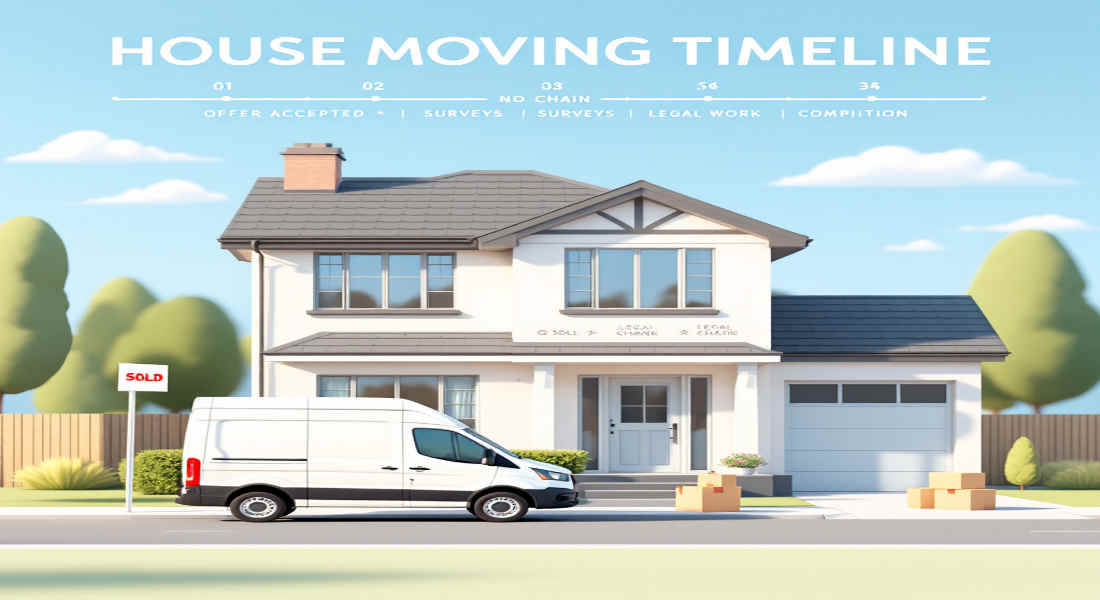Moving house is often seen as a complex and time-consuming process, especially when multiple buyers and sellers are involved in a property chain. However, the timeline can be significantly shorter and more predictable if your move is chain-free—meaning the seller doesn’t need to purchase another property before you can complete it. In this guide, we’ll explore what it really means to move without a chain, the typical stages involved, and how quickly you can expect to settle into your new home when the process is streamlined and free from the complications that chains can cause.
Advantages of moving without a chain
Moving without a chain offers a range of benefits that can significantly ease the process. One significant advantage is speed. You can set your timeline without waiting on other parties and finalize the move quickly.
Flexibility plays a crucial role as well. You’re not tied down to specific dates dictated by buyers or sellers in a chain. This allows for more personal scheduling around work or family commitments.
The uncertainties of relying on others vanish when you’re handling everything directly.
Financial savings may also be realized since there’s less risk of incurring costs from delays common in chained transactions. Moving independently provides autonomy and peace of mind during an overwhelming experience.
Disadvantages of moving without a chain
Moving without a chain might seem appealing, but it comes with its own set of drawbacks. One significant downside is the potential for higher costs. You may pay two mortgages or rent during the transition without a buyer.
This uncertainty can lead to stress and additional expenses while searching for short-term accommodations.
Sellers may not feel as motivated to compromise without another party involved, which could result in less favorable terms for you.
Moving alone means missing valuable insights from others in a chain. There’s no one else to share timelines and coordinate schedules, making everything more complicated than it needs to be.
You may also read (navigating house purchases keeping your council home).
Factors that can affect the timeline of a no-chain move
Several factors can influence how long it takes to move house without a chain. First, the availability of your new property plays a crucial role. If it’s vacant and ready for you, that speeds up the process significantly.
The condition of your current home also matters. If repairs or cleaning are needed before you vacate, this could delay everything. Similarly, flexibility in moving dates can help streamline tasks.
The speed at which solicitors or conveyancers process documents affects timelines, too.
Remember logistics! How quickly you can hire movers or rent a van will also impact the overall timeframe.
Personal circumstances like work commitments or family responsibilities affect when you can make the move happen smoothly and efficiently.
Tips for a smoother and faster no-chain move
Create a detailed checklist to ensure a smoother and faster no-chain move. This will keep you organized and help you track tasks as they’re completed.
Next, declutter your home before the packing begins. The less you have to move, the quicker the process will be. Consider donating or selling items you no longer need.
When packing, use sturdy boxes and label each one clearly. This saves time when unpacking in your new place.
If your budget allows, consider hiring professional movers. Their expertise can significantly improve speed and efficiency.
Stay flexible with timelines. Unexpected issues may arise; adaptability helps reduce stress during this busy period.
You may also read (how to safely turn off your home gas line).
Case studies: Real-life experiences of people who have moved without a chain
Moving without a chain can lead to some unique experiences. We’ve gathered stories from several individuals who have navigated this process, illustrating the variety of timelines and challenges they faced.
Emma moved into her new flat in just three weeks. She had sold her previous home privately and found a perfect rental ready for immediate occupancy. With no other parties involved, she bypassed the usual delays associated with linked transactions.
On the other hand, Mark’s experience was quite different. He thought moving without a chain would be swift but encountered unexpected hurdles when his chosen removal company faced scheduling conflicts. What he anticipated would take two weeks stretched out to nearly five due to these unforeseen circumstances.
Sarah opted for an off-market purchase and benefited greatly from the lack of competition during her search. Her move occurred smoothly within four weeks as both seller and buyer were motivated to finalize quickly, demonstrating how proactive communication can facilitate faster moves.
Each case illustrates that while moving a house without a chain offers potential speed advantages, it’s essential to remain adaptable. The timeline largely depends on individual circumstances such as property readiness, negotiations, and logistical arrangements.
These real-life accounts highlight the variability in timelines and the importance of planning when moving house with no chain attached. By learning from others’ experiences, future movers can better prepare for their transition journey.
You may also read (navigating home purchases spouse buying alone in texas).

